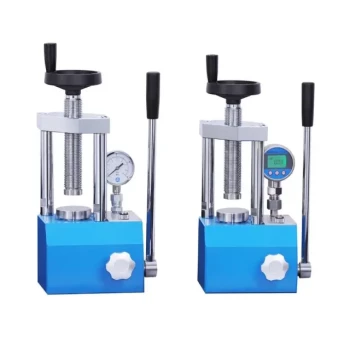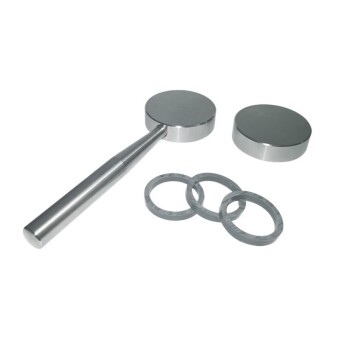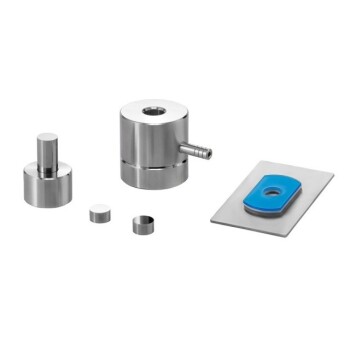In essence, specialized XRF pellet preparation presses are designed for high-throughput environments where speed, consistency, and automation are critical. Unlike manual or general-purpose hydraulic presses, these machines are optimized with features like integrated dies and rapid cycle times specifically to prepare large numbers of sample pellets for X-Ray Fluorescence (XRF) analysis with minimal operator intervention.
The choice of a pellet press is not simply about forming a sample; it's a strategic decision that directly impacts a laboratory's throughput, data quality, and operational efficiency. The "specialized" label signifies an optimization for a specific workflow: high-volume XRF analysis.
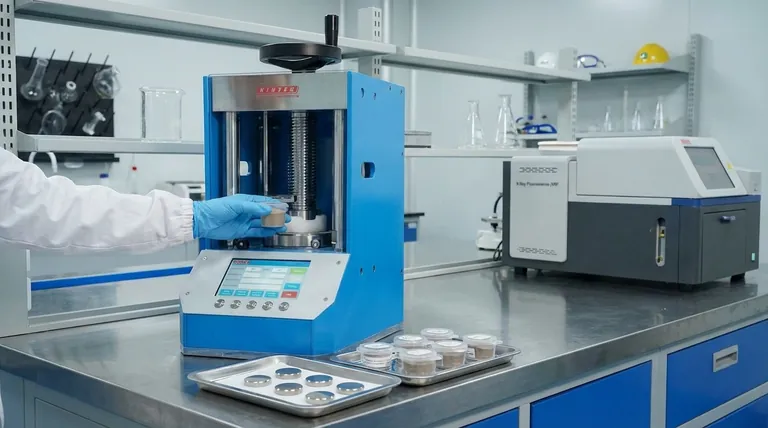
The Purpose of a Pellet in XRF Analysis
Before comparing presses, it is crucial to understand why pellets are necessary. XRF analysis relies on a uniform sample surface to produce accurate and repeatable results.
Creating a Homogeneous Sample
Pressing loose powder into a solid pellet compacts the material, reducing voids and ensuring the elemental composition is evenly distributed. This minimizes inconsistencies that can skew analytical data.
Ensuring a Flat, Consistent Surface
The X-ray beam interacts with the sample's surface. A flat, smooth, and standardized pellet ensures that the distance and angle between the X-ray source, the sample, and the detector remain constant for every measurement, which is vital for precision.
Specialized vs. General-Purpose Presses: A Key Distinction
The primary difference between a specialized XRF press and other types lies in its design focus. One is built for a specific, repetitive task, while others offer flexibility or prioritize cost savings.
The High-Throughput Advantage
Specialized XRF presses are engineered for speed. Features like integrated die sets eliminate the time-consuming process of assembling and disassembling a die for each sample. Their entire operational cycle is optimized for rapid pellet production.
Automation for Consistency and Speed
These presses incorporate automation for swift pellet extraction and preparation for the next sample. This not only dramatically increases throughput but also reduces the potential for operator error, leading to more consistent pellet quality across many samples.
The Manual Press Alternative
Manual presses are a viable and affordable option for labs with lower sample volumes. They require significant operator effort to apply pressure and more time for each pellet, making them best suited for educational settings or labs with tight budgets and low throughput needs.
Other Specialized Hydraulic Presses
The term "specialized" can also apply to hydraulic presses used for other applications, such as forming pellets for catalysts or battery materials. While these are also high-precision tools, they are tuned for different material properties and end-uses, unlike an XRF press which is optimized purely for the analytical workflow.
Understanding the Trade-offs
Choosing the right press involves balancing cost, speed, and precision. There is no single "best" option; there is only the best fit for your laboratory's goals.
Cost vs. Throughput
The most significant trade-off is upfront investment versus long-term efficiency. An automated, specialized press has a higher initial cost but delivers unparalleled throughput, lowering the cost-per-sample in a high-volume setting. A manual press is inexpensive but has a much higher labor cost per sample.
Operator Skill and Repeatability
Manual presses rely heavily on the operator's skill and physical strength to achieve consistent pressure, which can introduce variability between samples. An automated press removes this variable entirely, guaranteeing that every pellet is made under the exact same conditions.
Making the Right Choice for Your Laboratory
Your decision should be guided by your specific operational requirements, budget, and sample load.
- If your primary focus is high-volume analysis: A specialized, automated XRF press is the only practical choice to maintain efficiency and data integrity.
- If your primary focus is low-volume research or education: A manual press offers a cost-effective solution for preparing samples without the need for high throughput.
- If your primary focus is advanced materials R&D: A versatile hydraulic press that handles diverse materials may be required for creating pellets with specific, highly controlled properties beyond typical XRF needs.
Ultimately, selecting the correct press is a foundational step in ensuring the accuracy of your results and the efficiency of your lab.
Summary Table:
| Feature | Specialized XRF Press | Manual Press |
|---|---|---|
| Throughput | High (optimized for speed) | Low (time-consuming) |
| Automation | Yes (integrated dies, rapid cycles) | No (manual operation) |
| Consistency | High (minimizes operator error) | Variable (depends on operator skill) |
| Cost | Higher upfront, lower per-sample | Lower upfront, higher labor cost |
| Best For | High-volume XRF analysis | Low-volume, educational, or budget labs |
Upgrade your laboratory's efficiency with KINTEK's specialized lab press machines! Whether you need an automatic lab press, isostatic press, or heated lab press for high-throughput XRF analysis, our solutions deliver precise, consistent pellet preparation to enhance your data quality and reduce operational costs. Don't let manual processes slow you down—contact us today to discuss how we can tailor our equipment to meet your specific laboratory needs and boost your productivity!
Visual Guide
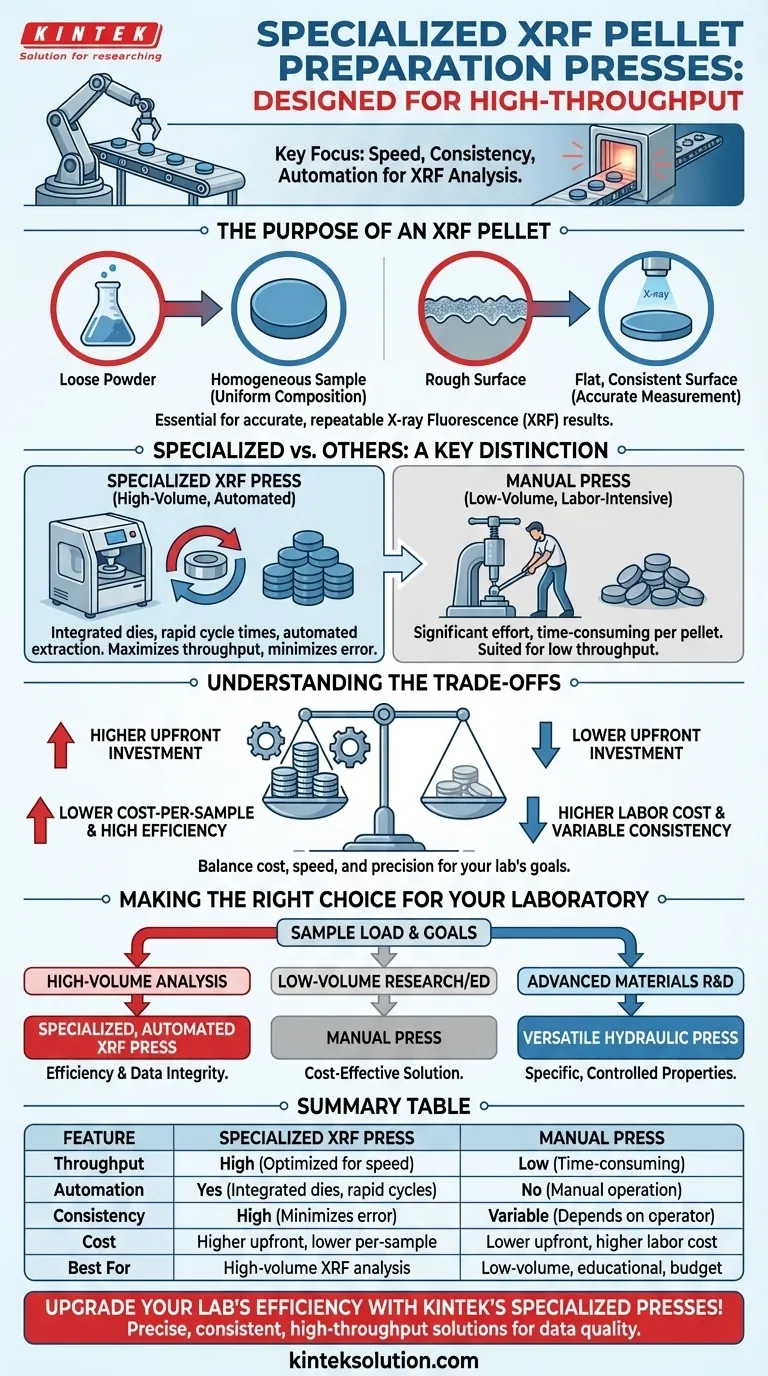
Related Products
- Automatic Laboratory Hydraulic Press Lab Pellet Press Machine
- Manual Laboratory Hydraulic Pellet Press Lab Hydraulic Press
- Manual Laboratory Hydraulic Press Lab Pellet Press
- Laboratory Hydraulic Press Lab Pellet Press Button Battery Press
- Laboratory Hydraulic Press 2T Lab Pellet Press for KBR FTIR
People Also Ask
- How do hydraulic pellet presses contribute to material testing and research? Unlock Precision in Sample Prep and Simulation
- How does a hydraulic press aid in XRF spectroscopy? Achieve Accurate Elemental Analysis with Reliable Sample Prep
- How are hydraulic pellet presses used in educational and industrial settings? Boost Efficiency in Labs and Workshops
- What are the key steps for making good KBr pellets? Master Precision for Flawless FTIR Analysis
- What are the limitations of hand-operated presses? Avoid Sample Compromise in Your Lab

